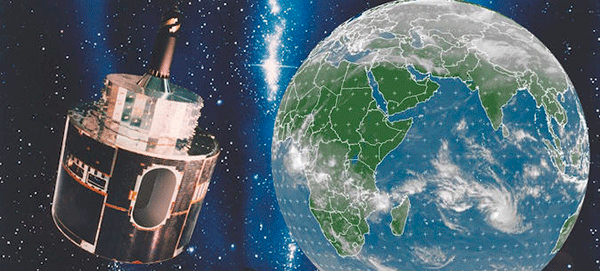GMV provides critical support to METEOSAT-7 end-of-life operations with optical telescopes

Meteosat-7 was launched in September 1997 and is operated by EUMETSAT, the European Organisation for the Exploitation of Meteorological Satellites. It is the last satellite of the first generation of Meteosat.
First over Europe and next from its current orbital location over the Indian Ocean region at 36000 Km above our heads, it has been providing a fruitful service for almost two decades, a period that is now coming to an end.
To avoid the proliferation of space debris in the crowded geostationary ring, EUMETSAT will conduct a safe re-orbiting into a so-called “graveyard” orbit, located at least 250 km above the current location. These end-of-life operations will be carried out in compliance with the latest recommendations included in the 24113 standard of the International Organization for Standardization (ISO) concerning space debris mitigation.
The re-orbiting will be performed starting on 3 April 2017 and by means of successive maneuvers, every half day approximately. Nominally after the first three maneuvers, the orbit will be raised already above the ISO protected ring. The orbit maneuvers will also be used to spin-down the satellite and dissipate its kinetic energy. The satellite will continue performing further maneuvers, with the same periodicity, until all remaining on-board fuel will be finally exhausted. Just after that, in less than one week, Meteosat-7 will reach its final “graveyard” orbit from the geostationary ring and it will be passivated.
In order to support these critical operations, GMV will task observations from 9 different telescopes worldwide to follow the spacecraft trajectory evolution every night. These telescopes, operated by GMV’s partner ISON (International Scientific Optical Network), are placed in distant locations in 6 different countries to ensure the highest redundancy in case of bad weather conditions or contingencies.
The data collected will be processed and delivered on a daily basis, to cope with the EUMETSAT augmented monitoring needs. This data will be used in support of operational tracking, based on regular ranging from the EUMETSAT ground stations network. This will ensure the highest reliability of the two major processes involved in this monitoring activity: the orbit determination process (ranging and optical data used singularly, or with data fusion technique) and the restitution/calibration of the executed maneuvers, both to be carried-out during these critical operations.
As part of this activity, and in parallel with these operations at EUMETSAT, GMV will make use of its internal state-of-the-art flight dynamics tools to perform an independent checking and monitoring of the maneuvers and orbital evolution of the spacecraft. GMV solutions, making use of all telescopes and ranging stations involved, will verify the correctness of EUMETSAT operational data.